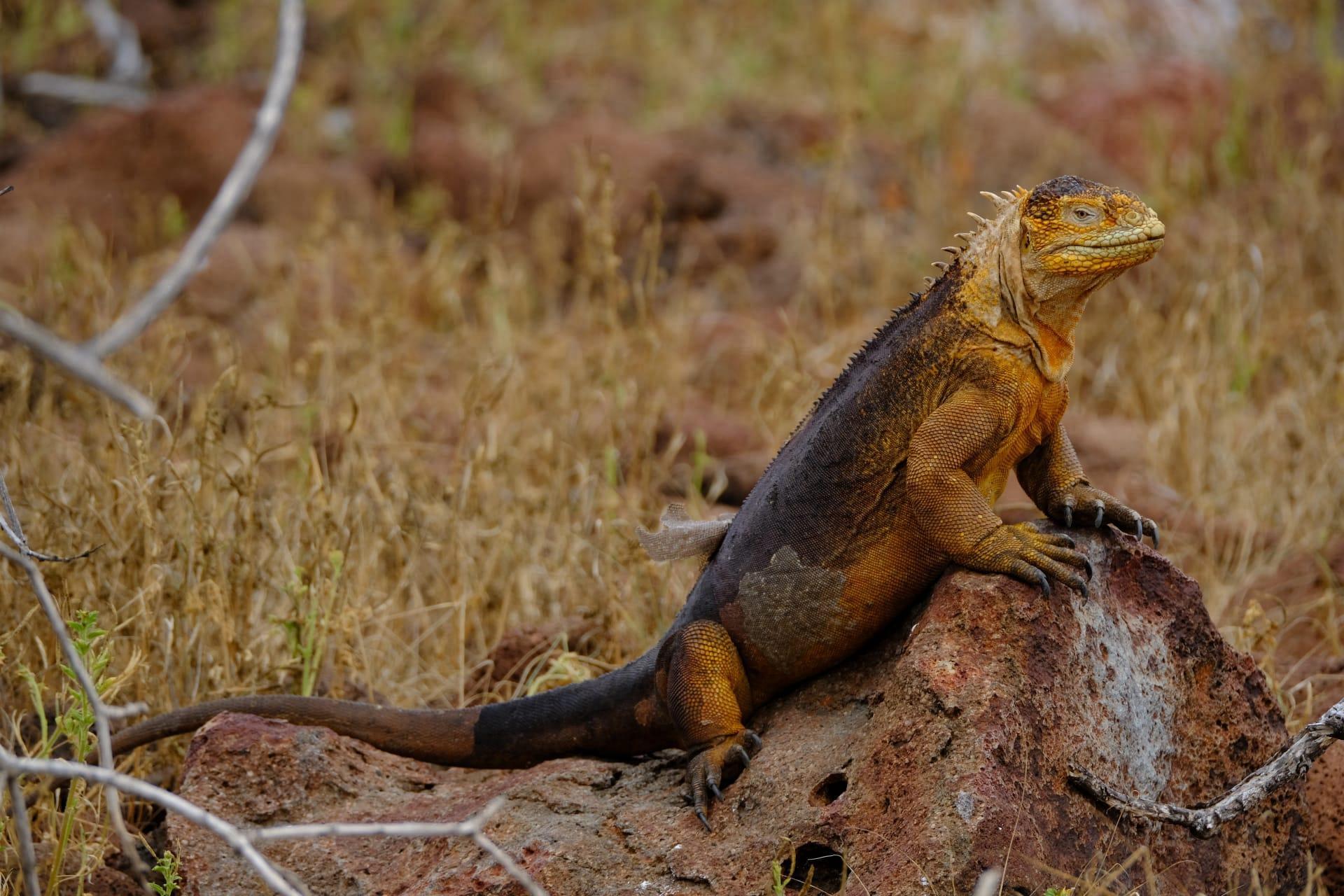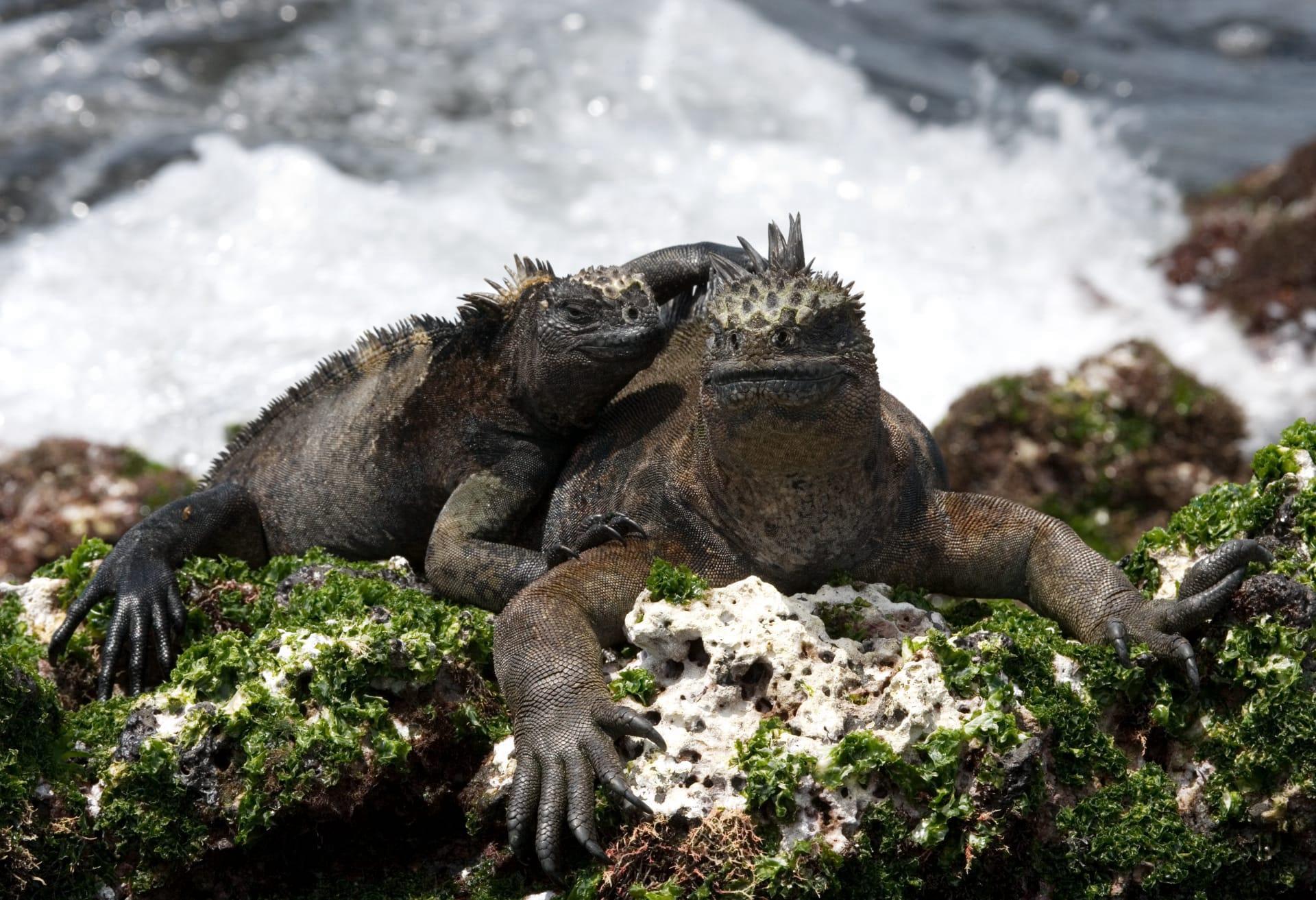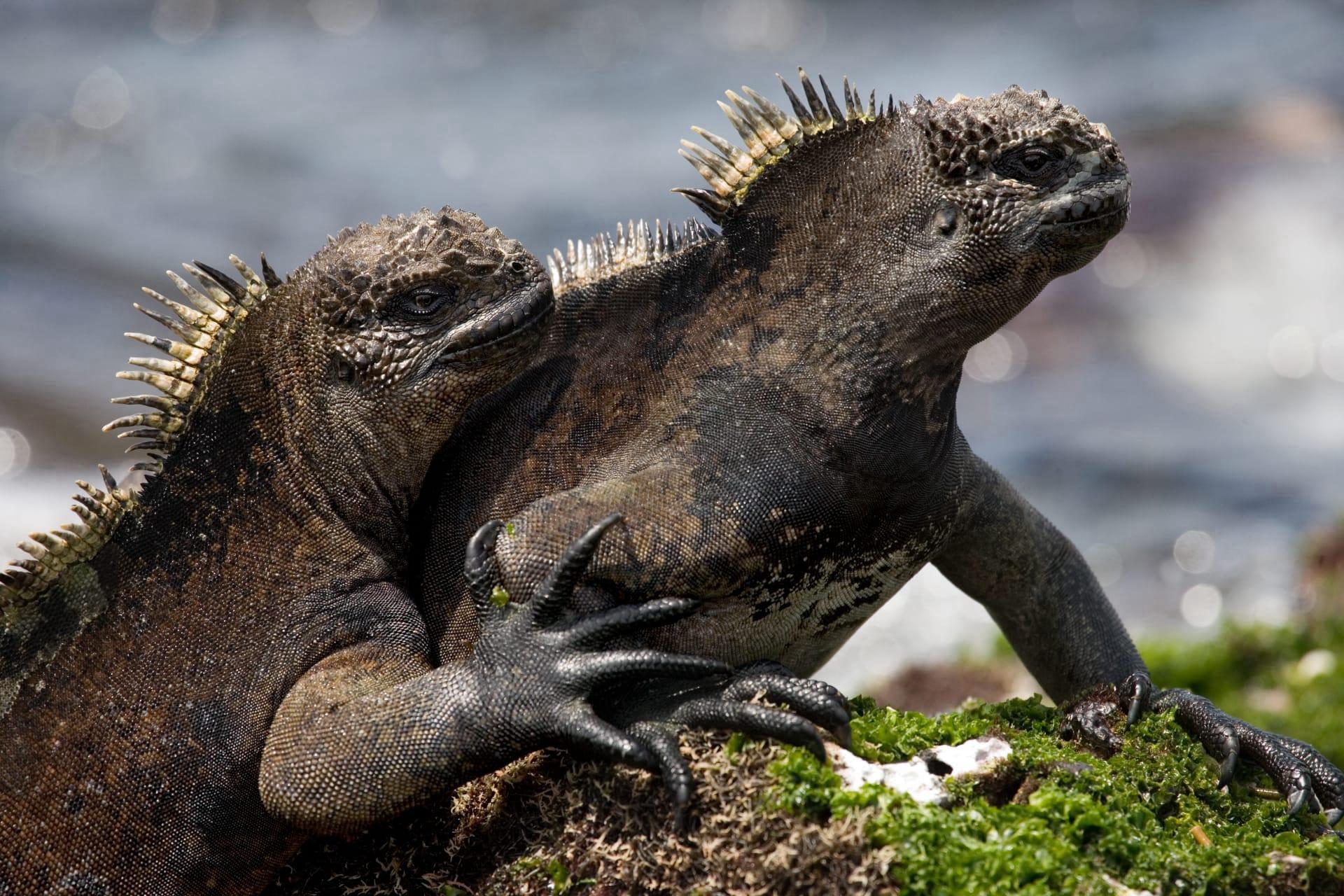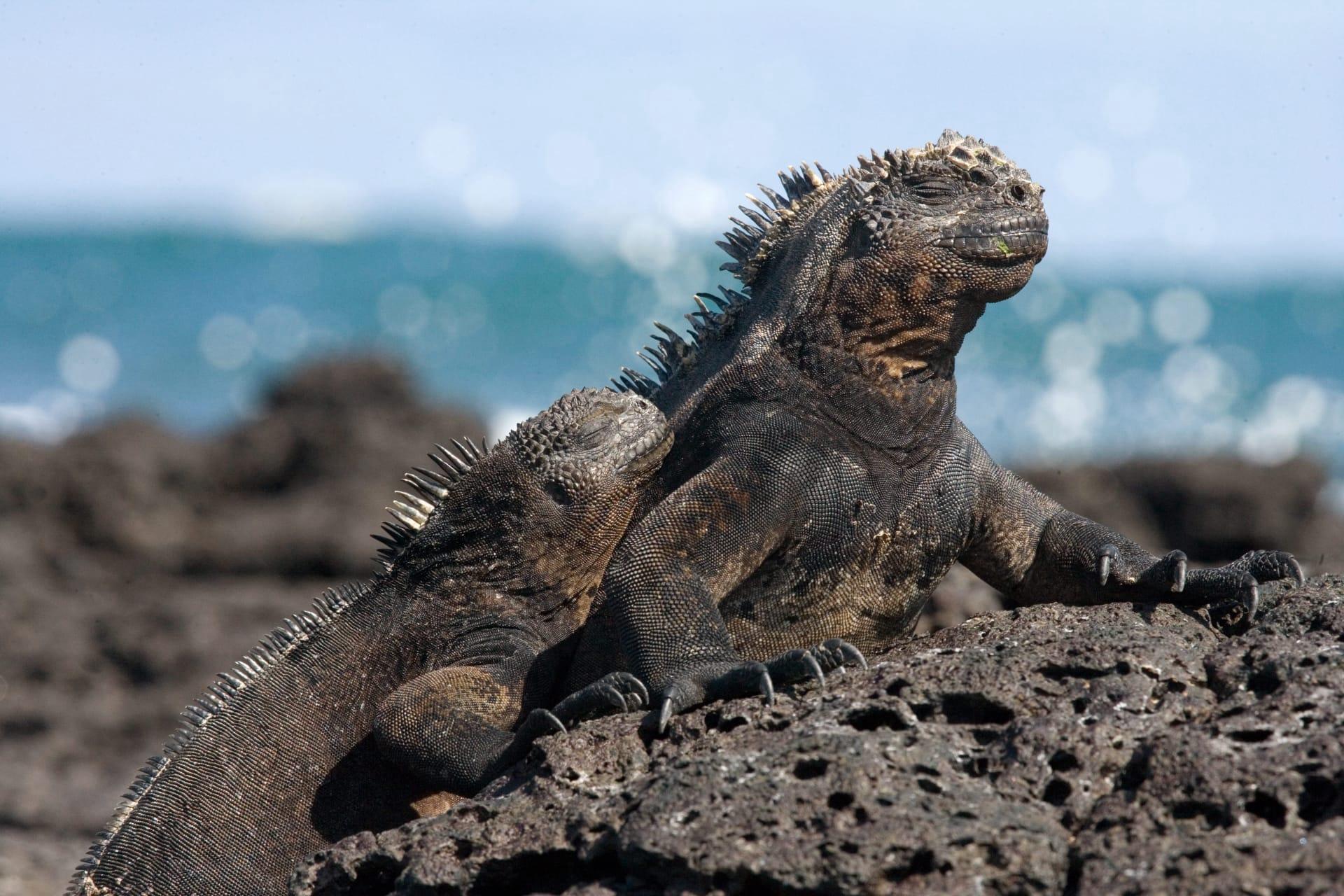1
The Marine Iguana, a unique reptile found only on the Galápagos Islands, has an extraordinary ability to forage in the sea. These iguanas are the only lizards that have adapted to life in the ocean, diving up to 30 feet deep to munch on algae and seaweeds. They can spend up to an hour underwater, a feat made possible by their flattened tails and strong limbs, which make them excellent swimmers. What's more, Marine Iguanas possess specialized glands that help them expel excess salt from their blood, a skill crucial for surviving in their salty habitat. This adaptation is so efficient that you can often see them sneezing out salt crystals!
Another fascinating aspect of Marine Iguanas is their size variation, which is directly linked to the food availability in their environment. On islands where food is abundant, these iguanas can grow up to 5.6 feet in length and weigh as much as 22 pounds. However, on islands where food is scarce, they are significantly smaller, showcasing a remarkable example of environmental adaptation. The size difference is so pronounced that initially, scientists thought they were looking at different species. This adaptability is a testament to the Marine Iguana's resilience and evolutionary ingenuity.

2
One of the most intriguing facts about Marine Iguanas is their dramatic color change during the breeding season. Outside of the breeding season, they generally exhibit a duller, grayish-black coloration. However, come mating season, males transform with vibrant colors, displaying hues of red, green, and even turquoise. This color change is thought to be a signal to potential mates, a dazzling display to attract females. It's like a natural fashion show, with each male flaunting its own unique pattern and color scheme to stand out in the crowd.
Marine Iguanas also exhibit a unique behavior known as 'group thermoregulation'. After spending time in the cold ocean waters, they often bask in the sun on the volcanic rocks of the Galápagos Islands. What's fascinating is that they do this collectively, forming large clusters to share body heat. This behavior is not just about warming up; it's also a social activity. By huddling together, they reduce heat loss and increase their chances of reaching the optimal body temperature quicker. This communal sunbathing is a rare and intriguing sight, showcasing the iguanas' social tendencies and survival strategies.

3
Marine Iguanas have a unique relationship with another Galápagos inhabitant: the Flightless Cormorant. In an unusual symbiotic relationship, these birds have been observed perching on the backs of iguanas. This might seem like an odd pairing, but there's a practical reason for it. The cormorants use the iguanas as mobile perches to dry their wings, while the iguanas seem undisturbed by their feathered companions. This interaction highlights the unique and unexpected ways that different species can coexist and benefit each other in the wild.
Interestingly, the Marine Iguana's diet plays a significant role in shaping the ecosystems of the Galápagos Islands. By feeding primarily on algae, they help control the growth of these plants, maintaining a balance in the marine ecosystem. Without their grazing, algae could overgrow, leading to negative impacts on the coral reefs and other marine life. Their feeding habits demonstrate the interconnectedness of species and how one creature's dining preferences can have a broader impact on the health and stability of its environment.

4
The survival skills of Marine Iguanas are quite remarkable. During El Niño events, when food becomes scarce, these iguanas have the ability to shorten their bones and shrink in size, a rare phenomenon in the animal kingdom. This shrinkage can be as much as 20% of their body length. This adaptation allows them to survive in harsh conditions by reducing their energy needs. Once food becomes abundant again, they can regrow to their original size. This ability to physically downsize and then regrow is a striking example of how these creatures have evolved to endure the fluctuating conditions of their environment.
Another intriguing aspect of Marine Iguanas is their social hierarchy, particularly among males. Larger males, often the dominant ones, occupy the prime basking spots and have first access to the best feeding areas. This hierarchy is established through displays of aggression and physical confrontations. However, these confrontations rarely result in serious injury, suggesting that the iguanas have a set of 'rules of engagement' that help maintain order within their communities. This social structure is a fascinating aspect of their behavior, revealing the complexity of their interactions and survival strategies.

5
Marine Iguanas have developed a unique method to cope with the cold waters of the Galápagos. They are ectothermic, meaning their body temperature depends on the external environment. Before diving into the chilly ocean, they absorb heat from the sun to raise their body temperature, which helps them maintain vital functions while swimming in cold waters. This preheating ritual is crucial for their survival and efficiency as foragers.
Finally, the reproductive habits of Marine Iguanas are quite interesting. Females lay their eggs in burrows dug into the sand, where they are incubated by the natural heat of the environment. This strategy helps protect the eggs from predators and environmental extremes. After laying eggs, females guard the burrows for several days, a rare behavior among lizards. This maternal instinct ensures the eggs' safety during the critical early days, highlighting the iguanas' unique approach to offspring protection and the continuation of their species.